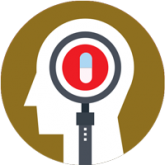News

Extended-release fluvoxamine for social anxiety disorder and OCD
- Author:
- John M. Kuzma, MD
New formulation allows once-daily dosing and might improve tolerability, reduce side effects.
News
Compulsive shopping: When spending begins to consume the consumer
- Author:
- John M. Kuzma, MD
- Donald W. Black, MD
Symptoms such as irresistible urges, frequent spending, preoccupation, remorse, and financial disaster suggest a discrete psychiatric disorder.
